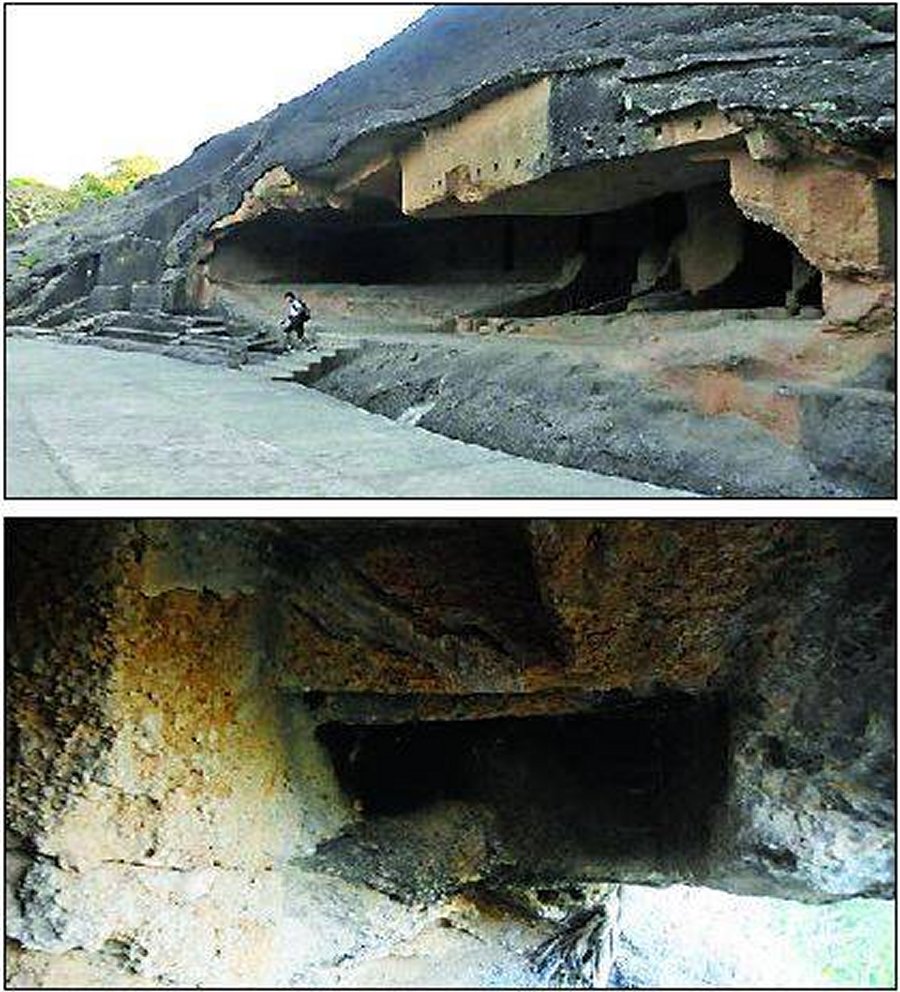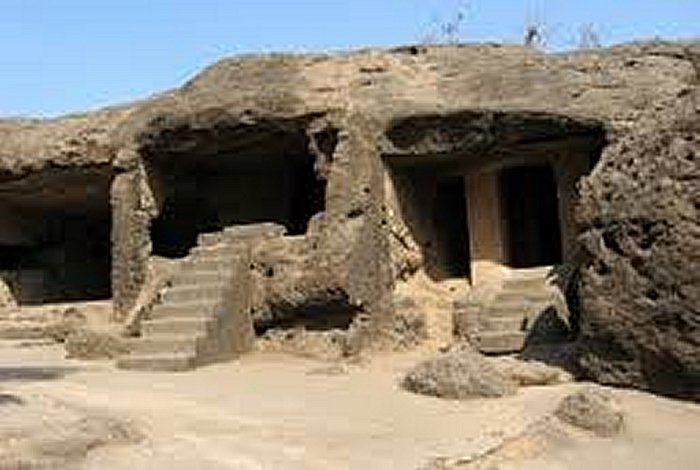MessageToEagle.com – Seven caves (Buddhist ‘viharas’) have been discovered in the forests of the sprawling Sanjay Gandhi National Park, Borivli, on the northern fringes of the city.
They are believed to have been constructed before the Kanheri Caves nearby and probably served as a monsoon shelter for the monks. One of the caves shows the remains of a ‘harmika’ (the top railing of a stupa).

The discovery was made by a three-member team last February under an excavation programme jointly conducted by the Centre for Archaeology, Mumbai University, and the department of ancient Indian culture, Sathaye College, Vile Parle; the head of the department, Suraj Pandit, led the team.
While a formal approval from the Archaeological Survey of India (ASI) is awaited for detailed exploration and documentation of the new caves, the team that has discovered the caves date them between 1st century BCE (or BC) and 5th-6th century CE (or AD).

“The seven new caves were not an accidental discovery, but rather the result of a systematic survey of the area. Before beginning actual field work, the team carried out documentary research for three months, which included a study of the area’s topography and water resources as most viharas were constructed close to a water source,” said Suraj Pandit, who led the team.
The Times of India writes that the Kanheri Caves, which date between 1st century BC and 10th century CE, are famous for their water management and rain water harvesting systems. This helped to zero in on areas where they were most likely to find caves. The team also referred to Pali texts, which describe caves around Rajgir in Bihar, as viharas (residences) of Buddhist monks and expected to find similar viharas, either natural or man-made, around Kanheri.
They also studied 150-year-old reports of the ASI to understand how to conduct the exploration.
“The reports narrate the discovery of pot shreds and microlithic tools, and we decided to look for these,” said Pandit.
Since monks were known to build caves close to water, the team began by hiking to a waterfall beyond the Kanheri Caves. This was a strenuous 20-minute walk to the base of the waterfall. They then hiked up through dense cactus and other shrubs and took another 30 minutes to reach the top of the waterfall.
“There were caves on either side of the waterfall – three on one side and two on the other. It was very clear these were excavated from the natural rock. The smooth curve, the plastering, the door beams, the benches to sleep on, were all indications that these were man-made caves,” said Pandit.
But the team overlooked a key indicator that would have made the task of finding the caves simpler.
“We forgot that in case of most Buddhist caves, access was provided by stairs cut into the rock. Only after we reached the top of the waterfall, we realized there was already a proper path leading to these caves,” laughed Pandit.
Excited at the discovery of the five caves, they decided to move ahead, but unfortunately as they were moving up a steep slope, Pandit lost his balance, slipped and fell. He fractured his hand and had a deep gash on his head and was rushed to a doctor.
The next day, the other two members of the team – Vinayak Parab, executive editor of a Marathi magazine Lok Prabha, and Akash Pawar, a student of Buddhism at Sathaye College – set out on their own, and found the remaining two caves.
One of the caves was actually inhabited till recently and was even surfaced with modern bathroom tiles. It had been used by one of the sadhus living in the park till the Bombay high court, in the late ’90s, ordered the eviction of all sadhus from the park.
Pandit, who did his PhD thesis on the Kanheri Caves, has been continually exploring the national park for new caves. In 2001-02, he had discovered six caves, which were reported to the ASI.
“Even a visit to the Kanheri Caves is merely a distraction from routine life. We want to change that. The city has many archaeological sites that are in danger of being demolished as they make way for new buildings. Such discoveries will help people to preserve their heritage,” said Mugdha Karnik, head of Mumbai University’s Centre for Extra-Mural Studies, who had set up the varsity’s Archaeology Centre.
MessageToEagle.com
source: The Times of India






